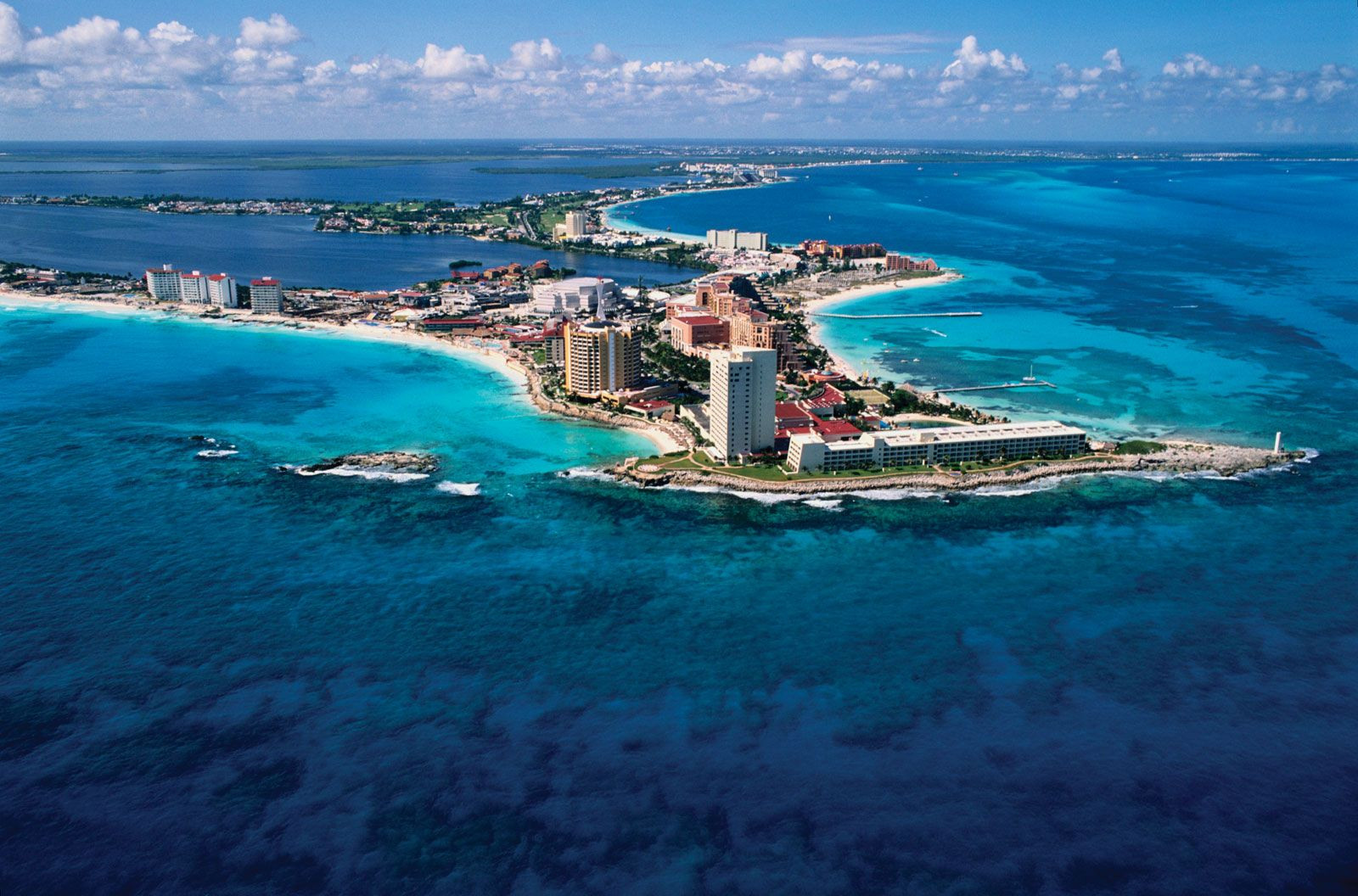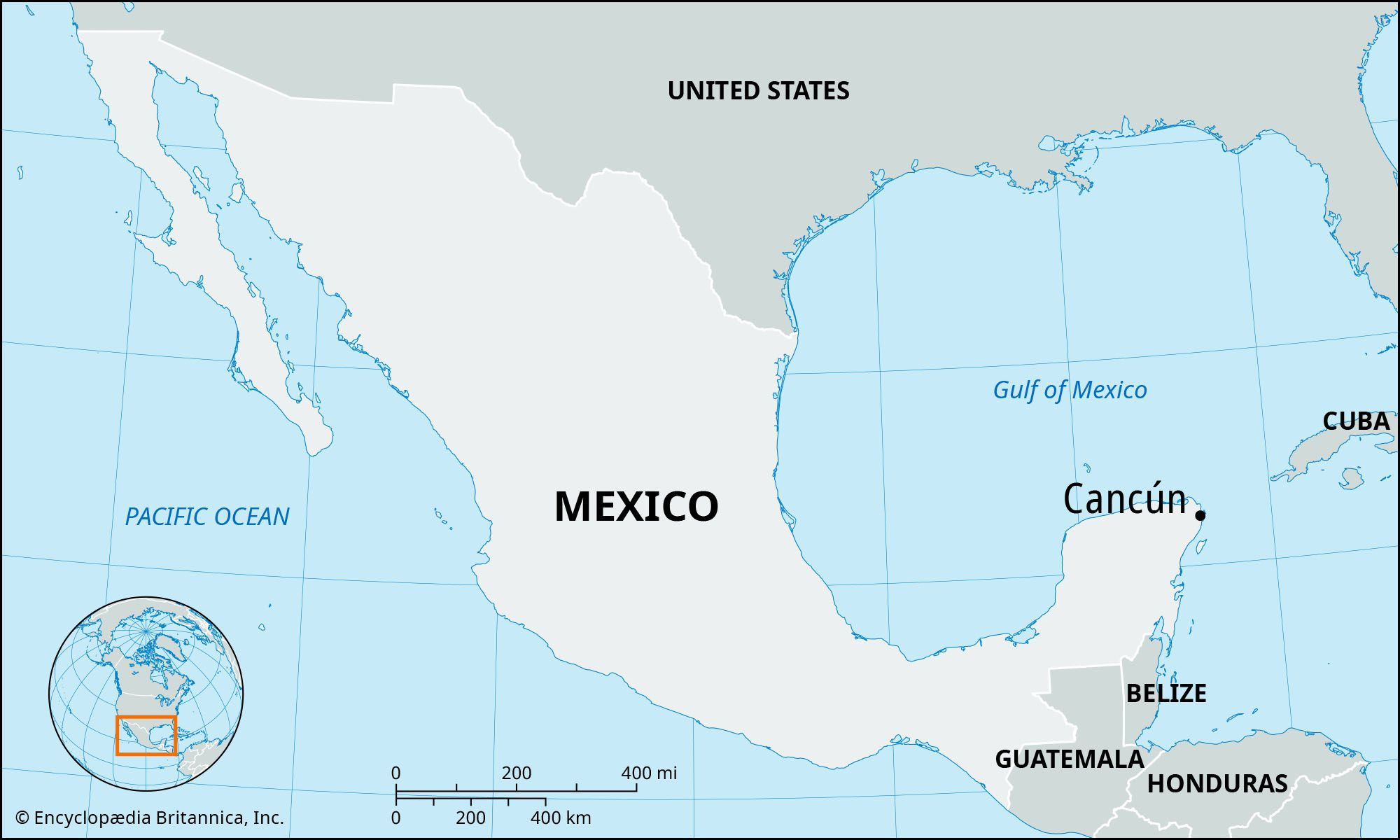Cancun, a name synonymous with stunning beaches and vibrant nightlife, is nestled in a prime location on the map of Mexico. Specifically, Cancun is located on the northeastern tip of the Yucatán Peninsula, in the state of Quintana Roo. This puts it squarely on Mexico’s Caribbean Sea coastline, offering breathtaking views and access to crystal-clear turquoise waters.
 Aerial view of Cancun coastline, showcasing the turquoise waters and white sand beaches of Mexico's popular Caribbean destination.
Aerial view of Cancun coastline, showcasing the turquoise waters and white sand beaches of Mexico's popular Caribbean destination.
The city of Cancun itself acts as a mainland hub, supporting the famed resort area situated on Cancun Island, also known as Isla Cancún or the Hotel Zone (Zona Hotelera). This resort area is a distinctive long, narrow island, stretching 13 miles (21 kilometers) and only 0.25 miles (400 meters) wide in some parts. A causeway seamlessly connects this island paradise back to the mainland city, making it easily accessible.
Imagine a place where white sand beaches meet lush palm groves, fringed by vibrant coral reefs teeming with marine life. This is the geographical setting of Cancun. The region boasts a warm, tropical climate, characterized by a short, refreshing rainy season. This consistent warmth and beauty have made Cancun a sought-after destination for travelers worldwide.
 Locator map pinpointing Cancun, Mexico, on the Yucatan Peninsula within the Quintana Roo state, highlighting its Caribbean Sea location.
Locator map pinpointing Cancun, Mexico, on the Yucatan Peninsula within the Quintana Roo state, highlighting its Caribbean Sea location.
Historically, the area was first inhabited by the Maya civilization. Long before its modern fame, it was recorded in 1843 as Cancúne, a Mayan word possibly meaning “Vessel at the End of the Rainbow.” For centuries, it remained a small, quiet fishing community. However, in 1970, the Mexican government recognized its potential and selected it to become a world-class international holiday center. This decision sparked a significant transformation, particularly in the 1980s, turning Cancun Island into the bustling resort destination we know today, attracting visitors from the United States, Europe, and beyond.
Cancun’s strategic location isn’t just about natural beauty. It’s also a gateway to explore the wider Yucatan Peninsula. It is well-connected by highways to other key locations like Puerto Juárez (for ferries to Isla Mujeres), Puerto Morelos (for Cozumel Island ferries), and significant Mayan archaeological sites like Tulum and the iconic Chichén Itzá, which lies approximately 87 miles (140 km) west of Cancun. Furthermore, Cancun International Airport, situated just 12 miles (19 km) south of the city, ensures easy access for international travelers.
In conclusion, Cancun is strategically positioned on the northeastern Yucatan Peninsula, facing the Caribbean Sea in the state of Quintana Roo, Mexico. This location is not only geographically blessed with stunning natural features but also serves as a perfect base to explore the rich cultural and historical tapestry of the surrounding region, making it a truly exceptional travel destination.
